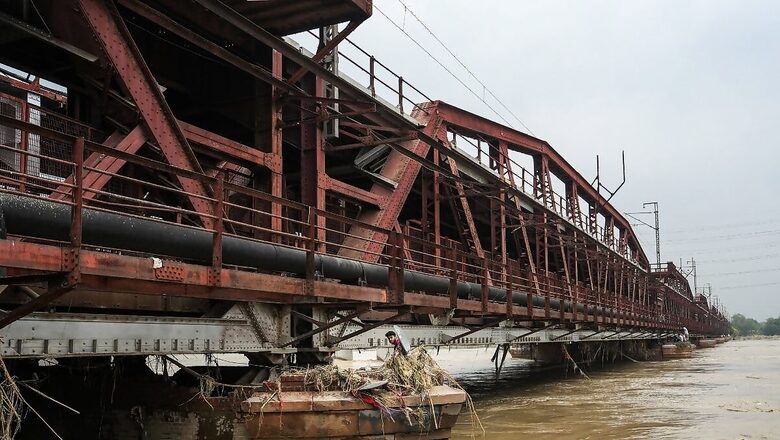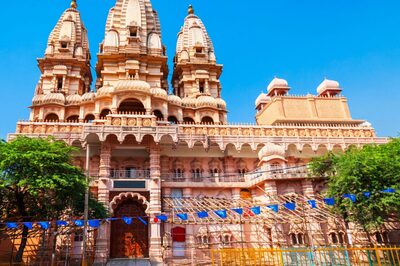
views
A surge of discharge from the Hathnikund Barrage into the Yamuna following heavy rains in Uttarakhand and Himachal Pradesh led to the river breaching the danger mark again in Delhi on Sunday, leading to waterlogging in low-lying areas. At 8 am on Sunday, the water level of Yamuna at Old Yamuna Bridge was recorded at 205.9 meters. It is expected to reach 206.7 meters by 4 pm.
The danger mark for the Yamuna River stands at 205.33 meters.
Any further increase in the water level of Yamuna is likely to impact relief and rehabilitation work in the flood-affected low-lying areas of the national capital.
#WATCH | Delhi: Yamuna’s water level crossed the danger mark, recorded at 205.81 meters at 7 am today.Drone visuals from Old Yamuna Bridge (Loha Pul) pic.twitter.com/BK7q0IhjwV
— ANI (@ANI) July 23, 2023
The Delhi government is on high alert due to the discharge of over 2 lakh cusecs of water from the Hathnikund Barrage into the river and that some parts of Yamuna Khadar (floodplains) might get inundated if the water level rises to 206.7 meters, Revenue Minister Atishi said on Saturday.
The water levels of Yamuna had been hovering around the danger mark of 205.33 meters for the last few days after reaching an all-time high of 208.66 meters on July 13.
Meanwhile, the India Meteorological Department has predicted heavy to very heavy rain in parts of Himachal Pradesh and Uttarakhand till July 25.
According to the CWC data, the flow rate at the Yamunanagar-located Hathnikund Barrage crossed the 1 lakh mark at 9 am on Saturday and oscillated between 2 lakh and 2.5 lakh cusecs between 10 am and 5 pm. Since then, it has remained between 1.5 lakh cusecs and 2 lakh cusecs.
“This significant volume of water poses a risk of mid-scale floods in the capital, which is still recuperating from one of the worst flood spells it experienced in the second week of July.
“The second spell of floods will likely see the Yamuna river reclaiming most of its floodplain in Delhi. Given the valuable insights gained from the last flood spell this month, city planners and policy makers must take note of the lessons learned. Citizens are counting on the swift response of authorities, expecting all the gates of the ITO barrage to be opened and fully functional. Additionally, immediate attention should be given to fix any breached sites and bunds,” said Bhim Singh Rawat, associate coordinator of the South Asia Network on Dams, Rivers and People.
There have been marginal fluctuations in the water level over the last four to five days amid rain in the upper catchment areas, primarily in Himachal Pradesh and Uttarakhand.
Delhi Irrigation and Flood Control Department officials said heavy rains upstream of Delhi will impact rehabilitation of the affected families in the inundated low-lying areas of the capital and they may have to stay in relief camps for a longer period.
Water Supply May Get Affected
It could also impact the water supply in the city, which became normal only on Tuesday after being affected for four or five days due to the inundation of a pump house at Wazirabad.
The pump house supplies raw water to Wazirabad, Chandrawal and Okhla treatment plants, which together account for around 25 per cent of the city’s supply.
Parts of Delhi have been grappling with waterlogging and flooding for more than two weeks now.
Initially, a downpour caused intense waterlogging on July 8 and 9, with the city receiving 125 per cent of its monthly rainfall quota in just two days.
Subsequently, heavy rains in the upper catchment areas of the Yamuna, including in Himachal Pradesh, Uttarakhand and Haryana, led to the river swelling to record levels.
(With PTI Inputs)




















Comments
0 comment